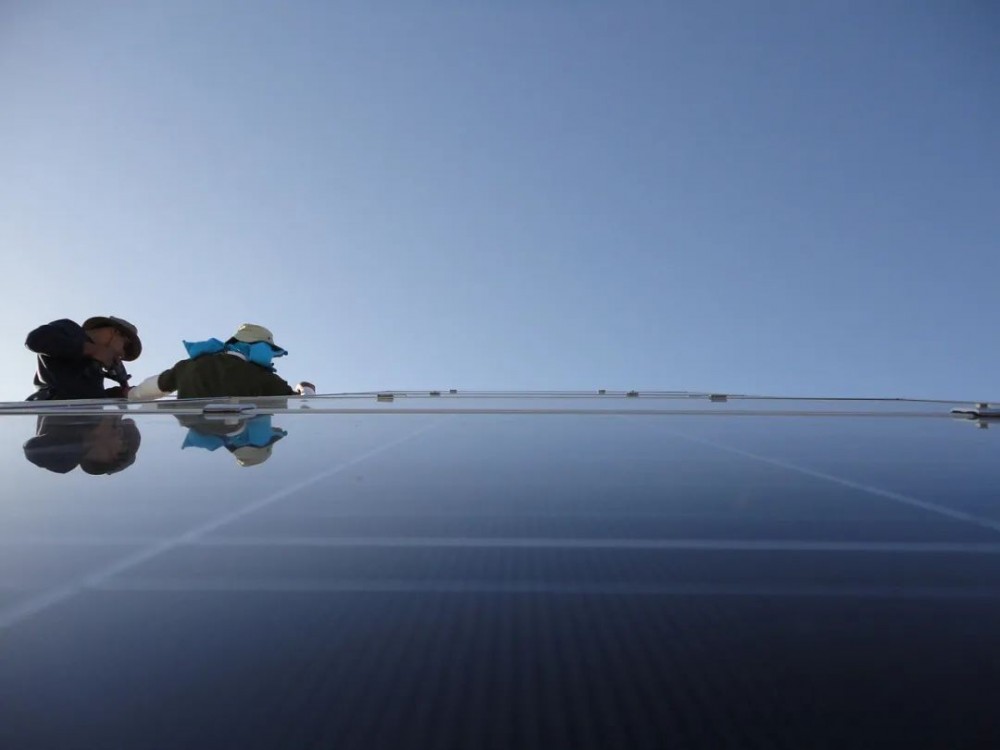In general, clearer skies, longer days and more sunshine mean that photovoltaic power stations can output more electricity. However, this is not the case in the United Kingdom, this summer has just begun, the British photovoltaic power generation suffered a Waterloo.
The company’s main goal is to provide a better solution to the problem. Sammy Wilson, a member of the British House of Commons, publicly commented, “The UK has had to start up coal-fired generators during this heatwave as temperatures have been so high that PV modules have been forced to ‘go offline’.”
Photovoltaic power generation efficiency is severely reduced
Sammy Wilson’s comments were met with a collective rebuttal from the UK PV industry, calling his statements irresponsible and untrue. He then corrected himself by saying, “It’s not that PV modules aren’t generating power, it’s that the efficiency of power generation is seriously declining.”
European mainstream media Euronews TV cited industry experts to clarify that there is no technical problem with the PV modules, which did not burst under the heat wave attack. Alastair Buckley, a British PV technology research expert and professor of organic electronics at the University of Sheffield, pointed out that “high temperatures do have an impact on the overall output of PV power stations, but it’s no big deal, with hot weather, the power output of PV power stations will drop, but not precipitously.”
Chris Hewitt, an executive at a British PV company, said, “Cooler weather will make PV modules more efficient, but more light sources also mean more power. The PV modules we have installed in the Arab region are working fine, and the PV modules installed there are the same as those installed in Birmingham and Oxford in the UK.”
While the first week of June saw significant PV generation in the UK, contributing about 9% of electricity, more than the 2022 annual average, longer days and warmer temperatures did lead to a drop in PV module generation efficiency. mid-June saw a drop of nearly a quarter in UK PV generation compared to early June.
A British photovoltaic companies cited test data that PV modules can work in minus 40 degrees Celsius to minus 85 degrees Celsius. However, in hotter weather, the PV module power output efficiency will drop. After temperatures reach 25 degrees Celsius, for every 1 degree Celsius rise, PV module performance will drop by 0.34 percentage points. In addition, the PV module power output will decrease by about 20% when the temperature approaches the boiling point, all other conditions being equal.
High temperatures forced to count on coal power to keep supply
This June, the average temperature in the UK was much higher than in previous years, and the National Weather Service issued a heat warning covering most of the country. The National Electricity Supply Company even asked its coal-fired power plants to start two coal-fired generating units “if necessary”.
Jess Ralston, head of energy at the UK’s Energy and Climate Intelligence Unit, has said, “As more offshore wind and photovoltaic power stations come on stream, coal’s back-up role will become redundant.” The reality this year, however, is that the UK still needs to count on coal power to secure its electricity supply.
It is widely believed that the UK will never be able to truly use green power if the problem of reduced efficiency of photovoltaic modules in hot weather is not addressed. European Press TV pointed out that it should be noted that, until now, the UK has not developed a specific PV module products to cope with the hot weather to ensure efficient output.
A European PV company executive argued: “Although PV modules are less efficient at high temperatures, coal power stations, natural gas power stations, and nuclear power stations are also affected by high temperatures. As climate change continues, the impact of high temperatures on power stations will always be present and even worsen.”
BBC also pointed out that restarting coal-fired power plants is not only affected by the decline in efficiency of photovoltaic modules in hot weather, which is the result of multiple factors. First, the social demand for electricity is high; second, the wind resource shortage, wind farms power generation has declined significantly; third, some natural gas-fired power stations are in the maintenance period, the available natural gas power to reduce; fourth, technical barriers and cross-border power transportation is not developed, the power can be imported to reduce.
It is understood that recently, due to connector failure, the submarine cable transmission capacity connecting the UK and Norway is limited to half of the previous capacity, the UK power supply is relatively reduced.
The process of abandoning coal is swinging from side to side
“Where exactly is the UK getting a stable source of energy and electricity from?” “Is the UK really making progress towards its climate goals by restarting coal-fired power plants because of high temperatures?” At one point, the BBC and other media outlets all wrote articles questioning the impact of hot weather on the UK’s green transition.
According to current plans, the UK will phase out coal by October 2024, but the UK government’s attitude toward getting rid of coal has always wavered from side to side.
Last year, a coal mine in Cumbria, in western England, was allowed to be mined. Then the British government began pushing for legislation to support the development of new coal mines. At the time, a British government employee said it was a decision made after “careful consideration. Conservative MP Lord Callanan said, “An outright ban on coal could seriously undermine the security of Britain’s energy supply.”
The UK Committee on Climate Change noted that to achieve a green transition, the UK needs to do more to plan for the time when wind and photovoltaic power will not work. To this end, the UK’s climate change committee has proposed developing new technologies such as hydrogen without increasing greenhouse gas emissions to ensure that the pledge to use all clean electricity by 2035 is fulfilled and the net zero emissions target is achieved.
“Compared to fossil fuels, photovoltaic power remains cost-effective and more effective in combating climate change. This is why we must continue to deploy PV power plants. In the summer, we should deploy PV power even more.” said the above-mentioned European PV executives.





